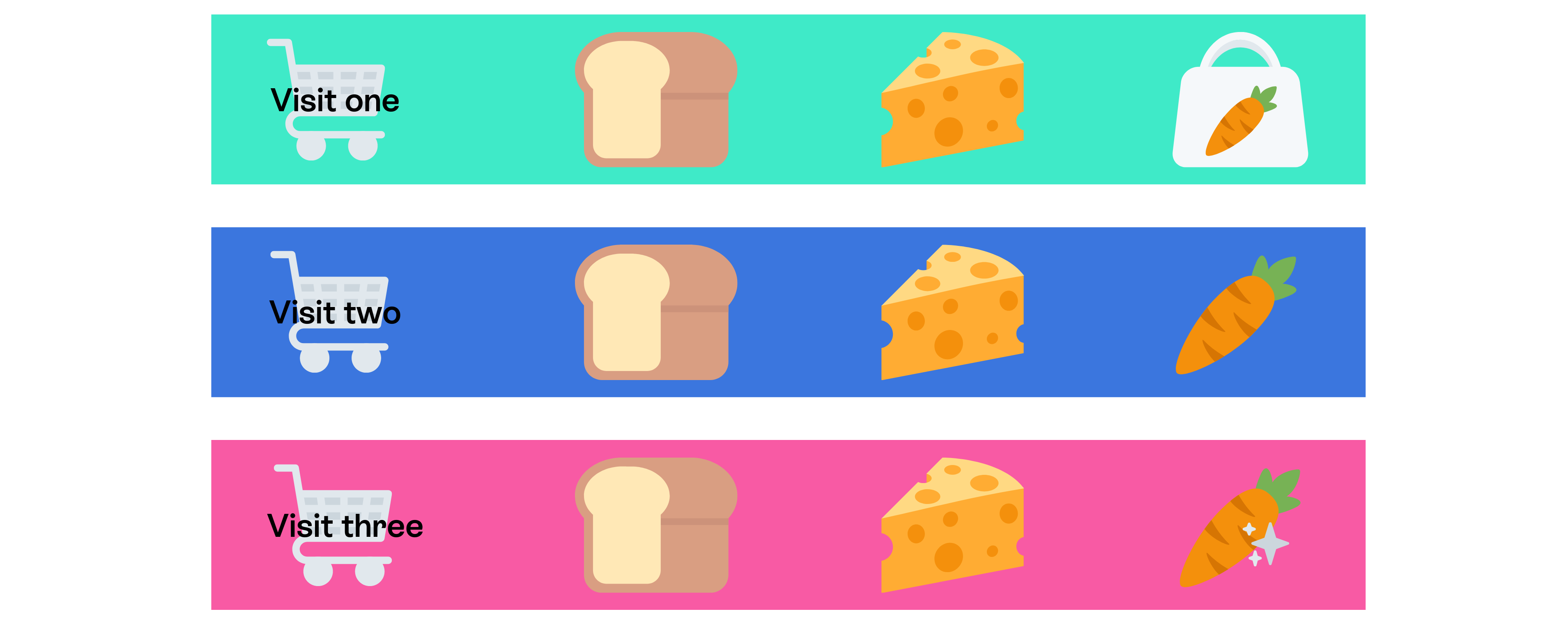
Have you ever received a ridiculous online shopping substitution? If you haven’t, search #substitutionfail on Twitter and you’ll soon fall down the rabbit hole of silly supermarket swaps…
When products are out of stock, online grocery substitutions are generally manual and time pressured. Rather than basing substitutions on data and insight, supermarkets are making inconsistent swaps – either bemusing or infuriating their customers.
Some of the items you ordered were out of stock today…
You’ve ordered bread rolls but they’re out of stock. What do you imagine the most logical swap to be? Another type of bread roll? A loaf of bread? Bagels, even?
Think again. In this example, the customer received a much healthier alternative – sausage rolls…
How about a dinner fork instead of… a garden fork? Strawberry laces rather than… shoelaces? These are some of the more bizarre swaps online shoppers have been confronted with when unpacking their groceries.

Head over to Twitter and the subs get even funnier – a packet of bread mix instead of a loaf of bread and plain poppadums rather than Max Factor mascara, to name a couple.
But surely it’s just common sense?
A survey by Which? found two in five shoppers have received an online substitution. But despite substitutions occurring frequently, supermarkets aren’t providing a great customer experience when it comes to making swaps.
Using data to automate obvious or common sense decisions would result in a greater level of consistency when making grocery substitutions. Unfortunately, the world is seeing a chronic shortage of data science and analytics talent. Retailers are collecting data and insight, but don’t have the skills to make it work for them. There are also few accessible and affordable ways of scaling data science and AI techniques to enable regular use within large businesses.
The answer is affinity analytics.
It’s logical to turn to data science and analytics to solve the substitution fails we’ve just covered. But we need a way to automate the decisions a customer would make if this scenario happened whilst they were shopping. For example, if a customer knew an item would be out of stock, what would they choose to substitute it with? To achieve this, our automated solution needs to be personalised.
Research by McKinsey has found personalised experiences drive loyalty and differentiation. By using affinity analytics, supermarkets can understand the deep relationships between their customers and products – personalising and improving the customer experience.
There are three main components to affinity analytics:
Affinity.
Discovers the underlying relationships between customers and products. For example, the different products customers buy, including whether they are bought during the same shop or not.
Attributes.
How you describe products, customers and/or their relationships. For example, a pair of trainers may have the attributes ‘red’, ‘sports’, ‘fashionable’, ‘footwear’, ‘cheap’, ‘good value’, ‘young’ and ‘flimsy’.
Need states.
Both affinity and attributes can be used in harmony to define customer need states (ie how customers make shopping decisions). Customer need states are important for substitutions.
Attributes can be given to customers, as well as products. For example, ‘young’ could be a product attribute given to the trainers, but also a customer attribute given to the set of customers who are most likely to shop for them.
Natural language processing and review data can be used to automatically create attributes based on how customers describe products. Meanwhile, affinity algorithms can find a list of products that represent ‘sports shoe shopping’ or a list of customers who buy these products (enabling supermarkets to profile them against data sources like demographics).
But how can affinity analytics resolve silly substitutions?
By using simple transactional data, affinity analytics can establish which products are bought in the same visit (ie basket affinity); which products are bought by the same customers (ie customer affinity), and which products are bought by the same customer, but never in the same visit.
This insight can help supermarkets infer which products are complimentary (for example, cereal and milk) or competing (for instance, loose carrots and bagged carrots).
Discovering complimentary products helps retailers create product bundles or serve helpful and relevant online recommendations (eg ‘other customers bought…’). On the flip side, identifying competing products allows supermarkets to generate substitutions – indicating where demand may be transferred if a particular product is out of stock.

Take the example above. The shopper has visited a supermarket three times. You can see that they’ve bought bread, cheese and carrots every time, but never the same type of carrots in the same visit. In this case, we can infer that bread and cheese are complimentary to each other, but the three types of carrots (bagged, loose and Chantenay) are competing.
Ensuring data-driven product swaps.
Using affinity analytics for a full base of customers allows retailers to create matrices of every possible product to product pair, including how likely they are to be bought in the same visit and by the same customers. This enables supermarkets to validate whether product relationships are rare or overwhelming across the full range, then uncover the strongest relationships in customers’ shopping habits.
Once retailers can identify which products compete with each other and which have similar attributes, they can assign them to a particular customer need. Products can then be grouped together based on these attributes, resulting in a selection of substitutable items. If one is out of stock, the demand is transferred to one of the other products within the need state.
Automating this kind of analysis can deliver powerful insights about consumer shopping habits overall, promoting hyper personalisation and better customer experiences. Ultimately, affinity analytics provides more consistent suggestions for substitutions when items are out of stock.
Contact us to find out how affinity analytics can improve customer experiences for your retail business.


